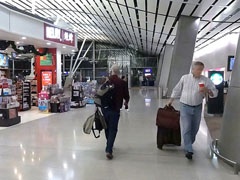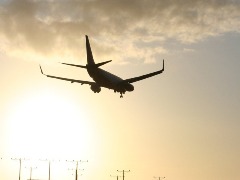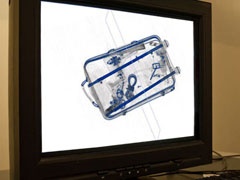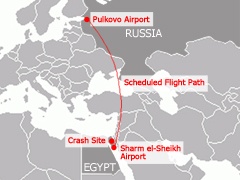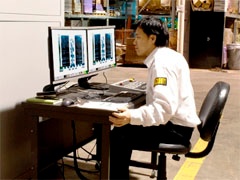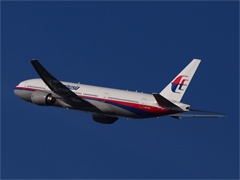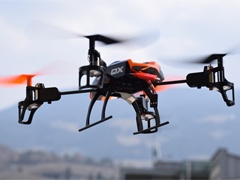Airports operate multiple checkpoints for the different items and people passing through. These checkpoints aim to keep threats, drugs, and prohibited items out of secure areas. Perhaps the most recognizable airport screening checkpoint is one experienced by travelers firsthand – the passenger screening and cabin baggage screening (CBS) checkpoint. This checkpoint processes millions of passengers daily and as a result, collects a fair amount of prohibited items. Let’s examine some commonly confiscated items seized by airport security at the passenger checkpoint.
Top Confiscated Items at an Airport Passenger Checkpoint
Posted by Vicki Tran on Wednesday, March 16, 2016 at 2:00 PM
Topics: Aviation Security, Trends, Security Threats, Transportation
Aviation is a complex industry that is constantly growing. According to IATA, over 3.7 billion passengers will fly this year. In a day, approximately 100,000 total flights take place and more than 16 billion USD worth of goods travel by air.
The global aviation industry is heavily relied upon by many and the demand for air travel will only grow. In fact, experts predict it will double over the next 20 years. That’s why security has and will always remain a top priority for those in aviation. So what types of challenges related to security does the industry face today?
Topics: Aviation Security, Trends, Cargo Security, Security Threats, Transportation, Current Events
Exploring the Hub and Spoke Concept for Passenger Screening
Posted by Vicki Tran on Wednesday, January 20, 2016 at 12:00 PM
Presently, passenger screening is controlled by the individual airports conducting it - each responsible for the security of their facility and the passengers moving through. Unfortunately, not all airports have the same level of security. Some fall under par while others go above and beyond.
Because of this inconsistency, a very early concept has been thrown around the industry. This concept asks us to take a look at security screening through a hub and spoke perspective. Roughly, this means sending passenger aircrafts to airports with established security controls for screening before heading to their final destination. Could this idea work or would it make situations even more complicated?
Topics: Aviation Security, Trends, Transportation
Extending Conventional X-ray by Integrating 3D X-ray Technology
Posted by Vicki Tran on Wednesday, December 2, 2015 at 2:00 PM
We’ve said it before and we’ll say it again – Today’s X-ray systems are currently in their most stable form and they’ll be around for quite some time. The screening technology is reliable and has proven to be effective when used by trained X-ray operators for threat detection. Currently, there is no technology existing in the market to replace conventional X-ray in terms of cost and speed.
Manufacturers have even started to develop 3D imaging technology to integrate into their systems – thus extending the life of conventional X-ray further. This technology brings flat 2D X-ray images to life by giving them depth while providing a comprehensive overview of screened baggage and cargo for 3D image interpretation.
Topics: Aviation Security, Trends, Cargo Security
Sadly, another air tragedy has struck. Nearly two weeks have passed since Metrojet Flight 9268, an Airbus 321 jetliner, crashed in the Sinai Peninsula. The plane was headed from Sharm el-Sheikh, Egypt to St. Petersburg, Russia when it came apart in the sky shortly after takeoff, killing all 224 people on board.
Although the incident is still under investigation, speculations are coming in regarding its fate. Could it have been an equipment malfunction since major repairs were done to the aircraft years earlier? Could it have been a technical issue unrelated to the repairs? Or could it have been a bomb planted there intentionally by ISIS affiliates?
Topics: Aviation Security, Security Threats, Transportation, Current Events
Critical Topics for Successful X-ray Equipment Training
Posted by Vicki Tran on Tuesday, November 3, 2015 at 11:00 AM
X-ray systems are deployed at security checkpoints in many different industries. X-ray operators use them to screen belongings, mail, and cargo. In real-time, these operators must be able to view an X-ray image and promptly make a decision about it - whether the scanned items are safe to proceed or if further inspection is required.
To get to that point, there are a few fundamental topics X-ray operators must have a solid understanding of first. Help operators become successful at X-ray screening on the job by ensuring your X-ray equipment training includes these critical topics.
Topics: Security Training, Aviation Security, Training & Development, General Security, Cargo Security, Ports & Borders, Critical Infrastructure, Transportation
How Are 2015 Aviation Industry Trends & Predictions Holding Up Now?
Posted by Vicki Tran on Wednesday, August 26, 2015 at 11:45 AM
We are about two-thirds into 2015 and thought it would be interesting to follow-up on a blog post published at the beginning of this year: Aviation Industry Trends, Predictions & Advice for 2015. The original blog post written by our President, Michael Rooksby, listed some aviation industry trends, predictions, and advice for 2015 as given by experts in the industry.
This week, I sat down with Michael to discuss how the expert predictions were panning out so far and to get a better understanding of his own thoughts and insights into the aviation industry. Here’s the dialogue from our Question and Answer session:
Topics: Security Training, Aviation Security, Trends, Transportation
Happy National Aviation Day from Safe Passage!
Posted by Vicki Tran on Wednesday, August 19, 2015 at 2:20 PM
Happy National Aviation Day! We know most everyone is impacted by aviation in some way, shape, or form. It has become such a big part of our lives. That’s why today celebrates the rich history and development of aviation.
The date August 19th was selected as National Aviation Day because it holds special meaning. It coincides with Orville Wright’s birthday. Orville and his brother, Wilbur Wright, were credited with building the first successful airplane with aircraft controls to steer the plane.
Topics: General, Aviation Security, Current Events
Confirmed: Flaperon Wing Fragment Comes From Missing MH370
Posted by Vicki Tran on Thursday, August 6, 2015 at 4:10 PM
Last week we learned about the flaperon that washed ashore at Reunion Island. The wing fragment was sent to France for official examination by an international team of experts. The world waited eagerly to find out whether or not the recently discovered aircraft debris came from Malaysia Airlines Flight 370.
Now 17 months after MH370 initially went missing, we finally learn of its fate. MH370 tragically crashed into the Indian Ocean. Sadly, we still do not know where the body of the aircraft lies or why it crashed. There are still many unanswered questions.
Topics: Aviation Security, Current Events
Unmanned aircraft systems (UAS) and unmanned aerial vehicles (UAV), commonly referred to as drones, are increasingly gaining attention. Military use of drones has already been in operation for years. Regulations for commercial use of drones are currently being pushed by businesses. Recreational use of drones is on the rise among consumers.
It may be a sensitive topic, but these drones all share airspace with other military and civil aircrafts. Yet, no firm regulations and enforcement of regulations exist on a global scale for the aviation industry.
Topics: Aviation Security, Trends, Current Events

